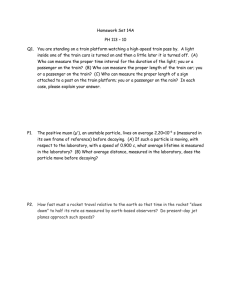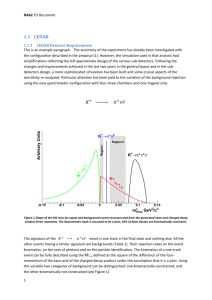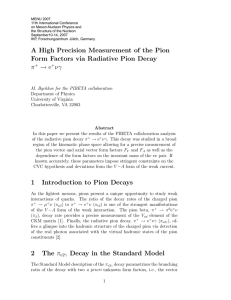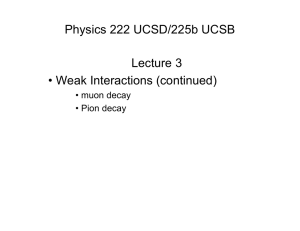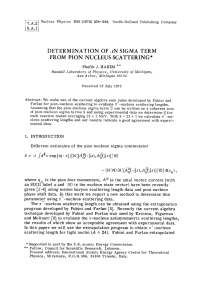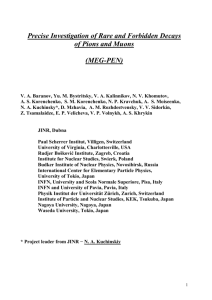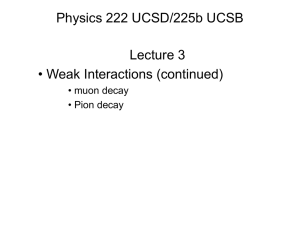HW2
advertisement
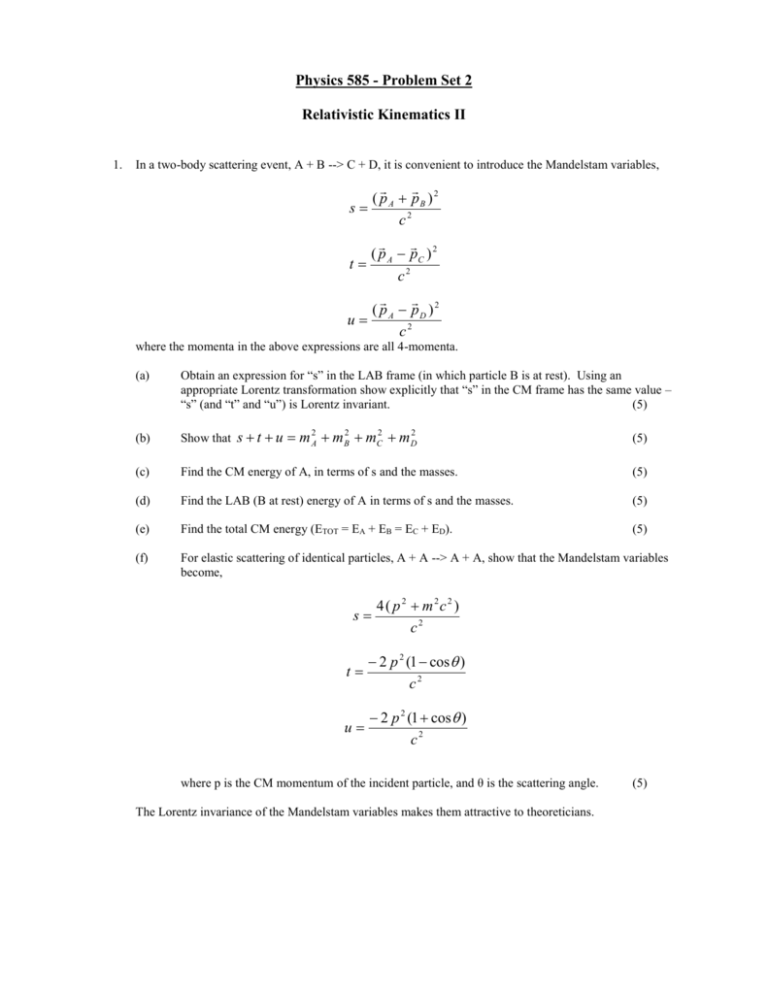
Physics 585 - Problem Set 2 Relativistic Kinematics II 1. In a two-body scattering event, A + B --> C + D, it is convenient to introduce the Mandelstam variables, ( p A pB ) 2 s c2 ( p A pC ) 2 t c2 ( p A pD ) 2 u c2 where the momenta in the above expressions are all 4-momenta. (a) Obtain an expression for “s” in the LAB frame (in which particle B is at rest). Using an appropriate Lorentz transformation show explicitly that “s” in the CM frame has the same value – “s” (and “t” and “u”) is Lorentz invariant. (5) (b) Show that (c) Find the CM energy of A, in terms of s and the masses. (5) (d) Find the LAB (B at rest) energy of A in terms of s and the masses. (5) (e) Find the total CM energy (ETOT = EA + EB = EC + ED). (5) (f) For elastic scattering of identical particles, A + A --> A + A, show that the Mandelstam variables become, s t u m A2 m B2 mC2 m D2 s (5) 4 ( p 2 m2c 2 ) c2 t 2 p 2 (1 cos ) c2 u 2 p 2 (1 cos ) c2 where p is the CM momentum of the incident particle, and θ is the scattering angle. The Lorentz invariance of the Mandelstam variables makes them attractive to theoreticians. (5) 2. 3) (a) Deduce an expression for the energy of a γ ray from the decay of a neutral pion, π0 --> γγ, in the reference frame in which the neutral pion has velocity βc. Your answer should be in terms of the mass m, energy E, and velocity βc of the pion, and of the polar angle of emission θ in the rest frame of the pion. (10) (b) If the pion has zero spin, in the rest frame of the neutral pion, the probability of finding a photon at a particular angle θ is isotropic (all solid angles d = sindd = d(cos)d are equally likely). Show that the energy distribution of the γ-rays in the frame in which the pion has velocity βc (LAB frame) will be flat ( all energy’s are equally likely), extending from E(1 + β )/2 to E(1 β)/2. (6) (c) In the LAB frame find an expression for the disparity D (the ratio of energies) of the two γ rays from π0 decay. For the case of relativistic pions, show that D>3 in half of the decays and D>7 in one quarter of them. (9) It has been verified that the neutrinos νe, νµ, ντ, etc. consist of linear combinations of discrete mass eigenstates ν1, ν2, ν3. Suppose that in the decay π --> µ + νµ, the state νµ consists of a combination of states of mass m1 and m2. Thus, in principle, the energy or momentum of the muon from pion decay at rest would consist of two discrete values. Assuming that the muon momentum can be measured with unlimited precision, determine the minimum detectable value of ( m2 m1 ) set by the irreducible error of measurement of the muon momentum due to the uncertainty in mass of the pion. (25) 2 4) 2 (a) Show that the threshold energy, in the lab, Emin for producing antiprotons by an incident proton beam in collision with a proton target is about 6.6 GeV. (10) (b) If the incident proton beam is in collision with a nuclear target show that when the motion of the nucleons within the nucleus is taken into account the threshold energy for antiproton production is given approximately by p 1 E min E m c min p where p is the magnitude of the internal momenta of the nucleons typically taken to be 0.2 GeV/c. (15)



